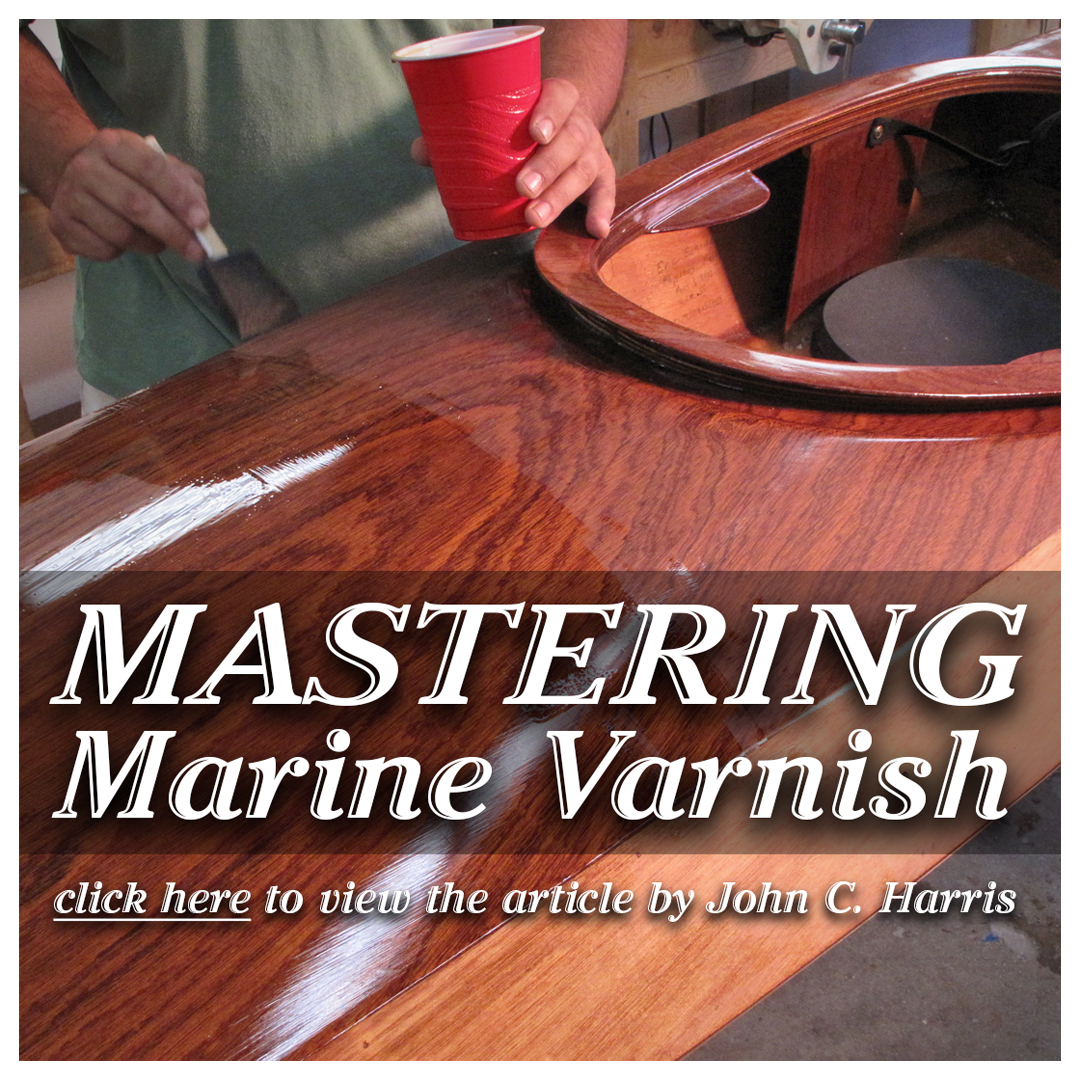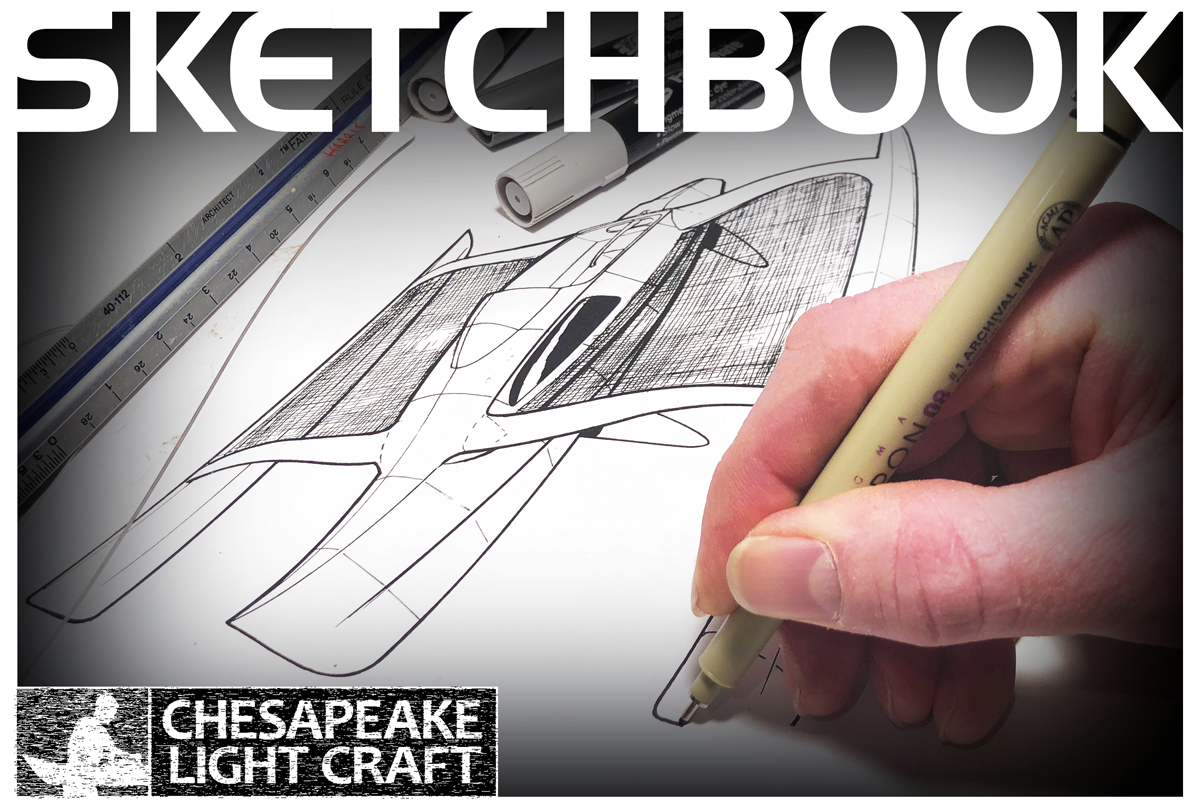Shop Tips » Working With Epoxy and Fiberglass |
CLC Epoxy Tips and FAQ
- What is the Mix Ratio? - The MAS mix ratio is 2:1 for Resin to Hardener. That ratio stays constant even when the hardeners are custom blended. If using calibrated pumps, simply push each pump one time. The resin pump dispenses twice the volume of the hardener pump. We sell calibrated epoxy pumps for MAS epoxies. West System epoxy would use these pumps.
- How much mixing is required? - Mixing is the key to a thorough cure, good films, and strong bonds. 1½ to 2 minutes of aggressive mixing, swiping the sides and bottom is recommended. Be sure mix ratio is 2: 1. Use clean plastic or uncoated paper cups or buckets and a clean mix stick. Or you can build yourself an Epoxy Mixer to ensure perfect epoxy.
- What is BLUSH, and how do I remove it? - Blush may form over the Fast mix hardener and resin. The Slow mix will not blush. Blush is noticeable as a slippery film formed over the cured surface. It can be removed with warm water and a sponge (rinse and wipe).
- What is the recoat time? - Since epoxies from CLC are 100% solid (no solvent), recoat time can be as short as surface tack. If more than 30 hours pass between coats, we recommend a light scuff sand. Always check for blush on surfaces.
- Temperature requirements? - For clear coating, we like to see temperatures remain over 60° F. 65° to 75° is a comfortable working range. For bonding, anything over 60° is adequate. In cooler temperature ranges below 60°, Medium epoxy is a good choice. See our Shop Tip Epoxy in Cold Weather.
- How to clean up? - Latex gloves and other personal protection should always be used. If you should get any epoxy on your skin, it should be cleaned off with a waterless soap immediately, then thoroughly washed with soap and water. Tools can be washed with white vinegar or Isopropyl alcohol. Semi-gelled epoxy can be cleaned with acetone. Buy Disposable Latex Gloves.
- What tools are used to apply the epoxy? - For coating and fiberglass use a short nap 1/8" nylon bristle roller, plastic squeegee, or disposable brushes. For bonding, use a disposable brush or a plastic squeegee with notches cut into the edge.
- How to protect the epoxy? - Epoxy surfaces should be protected from sun exposure. Clear coats may be protected by a good quality varnish or urethane with UVA protective additives. Paint is always considered a 100% filter. Indoor pieces do not need varnish over the epoxy.
- Can a stain be used on the project? - To use a stain on an epoxy project, use a waterborne urethane stain under the epoxy clear coat. Be sure stain is fully dry before coating work with epoxy. Always test first.
- What fillers can be used with the epoxy? - For bonding, where strength is essential, use Cab-O-Sil (silica powder). There are no ratio requirements as to how much can or can't be added of this thickener. For an easily sanded putty, wood flour can be added.
- What protection is needed when using epoxy? - Disposable glovesshould always be used and eye protection is important if any splashing were to occur. If the ventilation is poor a respiratory mask (like 3M Easy-Air) should be used. Clean any uncured epoxy off of the skin with vinegar immediately. The epoxy may cause irritation of the skin, especially fair skin.
- Avoid all direct skin contact with resin, hardeners and mixed epoxy by wearing disposable gloves and other protective clothing. Clean any uncured epoxy off the skin with white vinegar immediately. NEVER use solvents to remove epoxy from the skin. Always wash thoroughly with soap and water immediately after contact.
- Protect your eyes by wearing protective eyewear. If contact should occur, flush eyes immediately with running water for 15 minutes. If discomfort continues, seek medical attention.
- Avoid breathing vapors. Use epoxy only in areas with good ventilation. In small areas, be especially careful to have a supply of fresh air and to exhaust any fumes. When ventilation is not possible, wear a respirator with an organic vapor cartridge when sanding.
- Avoid ingestion. Wash thoroughly after each use and especially before eating or smoking.
- Clean up spills with a squeegee and paper towels. Scrape up as much material as possible with the squeegee before using the paper towels. Sand, clay or other absorbent materials may be used to contain or soak up large spills. Clean residue white vinegar or Isopropyl Alcohol.
- Dispose of resin, hardener and empty containers safely. Do not dispose of resin or hardener in a liquid state. Before disposing of resin and hardener containers, puncture the corners of can and drain residue into clean containers for re-use. Small quantities of resin and hardener can be mixed and cured completely to a non-hazardous solid. Place pots of curing resin and hardeners outside on the ground to avoid the danger of excessive heat and vapors. Dispose of after the reaction is complete and mass has cooled. Then follow your local, state and federal regulations for proper disposal.
- What is the shelf life of these products? - The resin has an infinite shelf life and the slow and fast catalysts have a shelf life of 1 year in a closed container.
- What surface preparation is needed prior to application of epoxy? - All surfaces should be cleaned of any contaminates, such as oil, grease and pooled water. Light sanding is recommended. A clean cloth moistened with Isopropyl alcohol or plain water may be used to clean surfaces. DO NOT USE ACETONE, A TACK CLOTH, OR SOLVENT.
- What are the major pitfalls that most users fall into? - Bad mixing practices are the cause of 99% of all problems. Mix, mix, mix, and mix some more. During coating, the temperature falls below dewpoint. A little temperature goes a long way toward good coating. Weak bond is a result of too much clamp pressure. The key to strong epoxy bonds is light pressure and adding the correct filler. Allow maximum clamp time; warming the piece can reduce this time (a light works well.)
- How much coverage will one catalyzed gallon give? - Depending on your application technique, generally, you can cover 500 sq. feet 3 mil thick.
- How does temperature variation effects epoxy? - For every 10°F. the temperature falls (when below 77°F) the gel time in the pot will double. The thin film set will come close to a 1.3 increase in time for every 18°F below 77°F. The exact opposite will occur as temperatures increase above 77°F. The gel time in the pot will be cut in half for every 18°F. And the thin film set will decrease by a factor of approximately 0.7 . We have found that the thinner the laminate or the film, the less affected is the thin film set time. Applications which are allowed to cool below the freezing point must be warmed to achieve a full through cure. In the case of freezing, the solid or film must be checked for hardness to ensure full strength has been achieved.
- Checking for Hardness - Using the Rule of "Thumb" - To quickly check for full hardness, press thumbnail into solid or coating firmly; no indentation should occur. This test is also very helpful when determining if a piece is ready for sanding or machining.
- Customizing Cure Times- the blending of Slow and Fast Hardeners -The time it takes for an epoxy mixture to change from liquid to solid is the cure time. There are four phases:
-
- Open (working) time or wet lay-up time.
- The mixture is still liquefied.
- Initial cure is reached when the mixture has turned to gel.
- Final cure is when the epoxy is now solid.
- The speed and the length of these phases and total cure time varies relative to temperature and which hardener was used - slow or fast or combination of both - and if additives have been added to the mixture. Cure times can be speeded or slowed depending on your needed application by the combining of the Fast and Slow hardeners. Cure times for the Fast hardener, combined with the low viscosity Epoxy resin can be lengthened by the addition of 35-40% by volume of the Slow hardener. This happens because the Slow generally has a lower peak exotherm temperature and the Slow molecules are bulkier, which slows down the whole chemical reaction between the resin and hardener. The Slow hardener can be speeded up by the addition of Fast hardener, however, it is important that the amount of Fast does not exceed 30% by volume. Adding over 30% of the Fast compromises the "no-blush" characteristics on the Slow. The mix ratio between the resin and hardener still continues to be 2:1 resin : hardener. NOTE - - The cure times are not directly proportional to the amount of hardener used to customize the blend. For example, if 25% Fast is added to Slow, the cure time is speeded by 12-15 %. Conversely, if 50% of Slow is added to Fast, the cure time is slowed down by 25%.
- The above ratios should get you in the curing ball park of a perfect shop/lab which warms and cools by increments of 18° F (see above). However, using both temperature variation and blending ratios which favor the "hot" side to manipulate a pot life, will probably get you close to your desired cure speed.
- Even if the pot life and thin film set of your first hybrid mix does not fall right on the money, the mix will cure as long as the resin to catalyst ratio is 2:1 and temperatures are not severely cold. We have been working with Hybrid blends of Slow and Fast and the following ratios are the most popular for the listed common conditions:
- Coating and Encapsulate: If temperatures are slightly cool (50-60°), we recommend speeding up Slow with approximately 20% of Fast. This still provides a blush free coating (but do check), and is normally sandable in the morning (remember, always mix resin and catalyst in a 2:1 ratio, mix thoroughly).
- Filleting and Bonding: Normally, since users are looking for maximum strength and minimum clamp time, we recommend 100% Fast. However, if the weather gets hot (over 85°), this mix can be controlled by adding approximately 25% Slow. (Remember always mix resin and catalyst in a 2:1 ratio, mix thoroughly).
-
- Controlling Cure Time through mixed Quantity, Container Shape and Temperature
- Mixed Quantity - A larger quantity of mixed epoxy will create more heat and have a shorter open (working) time and overall cure time. Smaller batches of epoxy create less heat than larger batches and also have longer working and cure times. In other words, a thicker layer of epoxy will cure sooner than a thin layer.
- Container Shape - The mixture's heat can be distributed by pouring the mixture into a larger, flatter container (like a roller pan, for example). This also extends the working time.
- Temperature - Heat can be applied or removed from the epoxy to shorten or extend open and cure times. After the epoxy is applied, a fan can be used to draw heat from the lay-up or application and extend the epoxy's open time. Moderate heat (an industrial hot air gun, hair dryer or heat lamp) applied to the lay-up or to the resin and hardener before mixing, will shorten the epoxy's cure time.
- Spoons Work Well as Filleting Tools - Place a good quantity of extended epoxy (putty) in the joint to be filleted. Use the back of a spoon drawn through the extended epoxy to shape a flawless fillet. Larger spoons create large diameter fillets. Clean spoon with white vinegar or methyl alcohol (we use plastic for the smaller fillets).
For more details on MAS epoxy or West System epoxy, check out our product pages.












